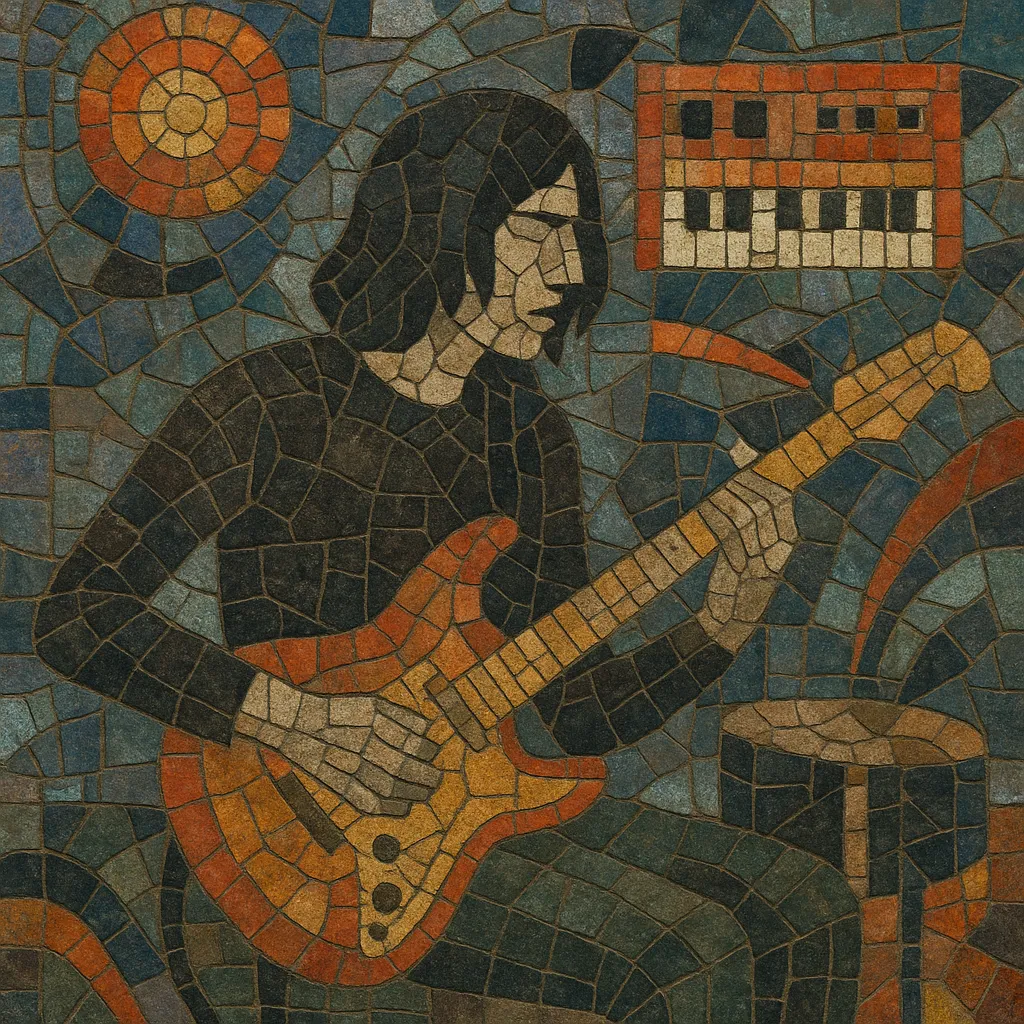Krautrock is an experimental form of rock that emerged in late-1960s West Germany, characterized by hypnotic repetition, long-form structures, and a forward-looking embrace of electronics and studio experimentation.
It typically features a steady, driving 4/4 “motorik” beat, circular bass ostinatos, sparse harmonic movement, and textural layering that draws from minimalism, free improvisation, and avant-garde composition. Rather than virtuosic solos, the emphasis is on collective groove, trance-inducing momentum, and timbral exploration.
The sound ranges from raw, percussive jams to spacious, cosmic electronics, often eschewing conventional Anglo-American blues forms in favor of a distinctly European modernist aesthetic.
Krautrock arose in West Germany as a reaction against mainstream Anglo-American rock and local Schlager pop, with young musicians inspired by contemporary avant-garde, minimalism, free jazz, and emerging electronic practices. Bands such as Can, Amon Düül II, and early Kraftwerk sought a new, post-war cultural identity, favoring improvisation, repetition, and experimental studio techniques over blues-based forms.
By the early 1970s, the scene flourished across hubs like Cologne, Düsseldorf, Berlin, and Munich. Can refined groove-based improvisation and tape edits; Neu! codified the steady motorik pulse; Faust embraced collage and radical studio experimentation; Cluster, Harmonia, and Tangerine Dream explored ambient textures and long electronic soundscapes; Popol Vuh fused spiritual minimalism with acoustic and electronic timbres. Labels and producers enabled bands to record quickly and experiment freely, resulting in a prolific, diverse body of work.
As punk and new wave rose, krautrock’s profile diminished commercially, but its ideas spread widely. The motorik beat and textural minimalism influenced post-punk and new wave; the electronic currents fed into progressive electronic, ambient, synth-pop, and, indirectly, techno and industrial. The genre’s reputation grew through reissues and critical reassessment in the 1990s–2000s, and its techniques remain foundational for experimental rock and electronic artists today.


